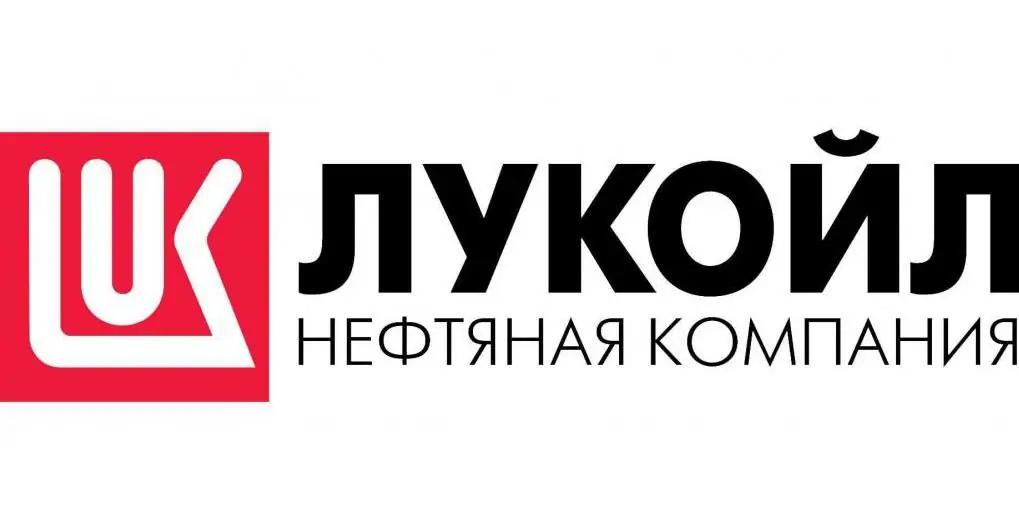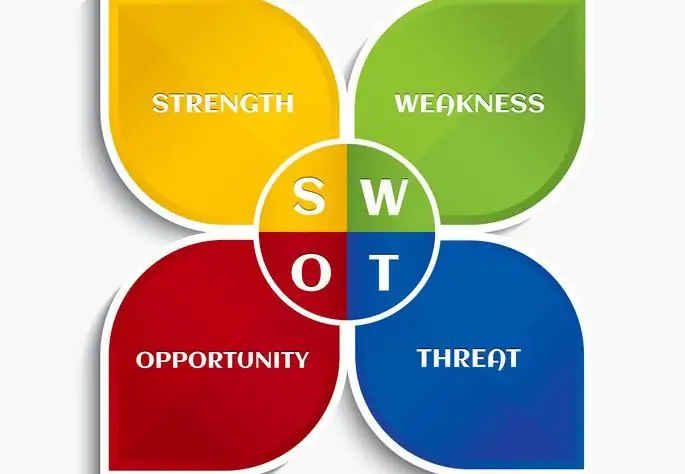Besides a company's internal resources and industry factors, there are several other macroeconomic factors that can have a profound impact on a company's performance. In situations such as new projects or product launch ideas, these factors need to be carefully analyzed to determine how important they are to the organization's success. One of the most commonly used analytical tools to assess external macroeconomic factors related to a particular situation is the PEST analysis. Let's look at examples of PEST analysis and talk about its benefits.
What is PEST analysis?

PEST-analysis is a marketing technique that allows you to assess the impact of the external environment on the effective operation of the company. It is most often used in strategic planning and is drawn up for a period of 3 to 5 years. The data obtained can be used to compile a SWOT analysis. Basically, the analysis of the external environment is presented in the form of a matrix consisting of four squares.
External environment considers:
- Microenvironment (shareholders, customers,creditors, etc.)
- Macro environment (economy, political processes, climatic factors, etc.)
Let's consider each macro factor separately.
Political (political factor)
The first step in the analysis is to study the phenomena associated with the work of the government. When developing a strategy and assessing the prospects for the development of a company, such political phenomena are considered as:
- state stability;
- the impact of adopted laws on the activities of the organization;
- degree of state influence on the industry in which the company operates;
- distribution of resources by the state, etc.
Economic (economic factors)
The main reason for considering this aspect is the ability of the company to make a profit. It is necessary to correctly predict demand and set a price in order to assess the prospects for the further development of the company. The objectives of studying the economic factor include:
- assessment of investment policy;
- analysis of prices for energy resources and raw materials;
- inflation rate and cost of living;
- assessment of other macroeconomic indicators affecting the purchasing power of the population and demand.
Social (social factors)
When considering this parameter, the following are taken into account:
- lifestyle;
- population size and structure;
- social mobility, he alth and education;
- standards of behavior, public opinion, etc.
Technologicalfactors)
Factors that characterize technological progress in the industry. This group of aspects is of global importance today, since in an era of rapidly developing technologies, industry tooling can change the balance of the market.
When considering technological factors, the main ones are:
- innovation in information technology;
- improving the production process through the introduction of the latest equipment;
- development of mobile technologies and the Internet;
- probable changes in technology over the next 5 years.
PEST-analysis on the example of an oil and gas company

For example, let's take the private Russian oil company Lukoil PJSC.
- Political. The effectiveness of the activities of a public joint stock company fully depends on the political mood in the country. An increase in taxes on oil production, sanctions against Russian oil companies, state regulation of energy prices can significantly reduce the company's net profit.
- Economic. A decrease in the purchasing power of the population can lead to the fact that cars will be used less, therefore, the consumption of the company's refined products will decrease. An increase in inflation will lead to an increase in the cost of production, which will force the company to increase the price of the final product. The cost of oil will also affect the company's profits.
- Social. Having established itself asreliable supplier, Lukoil PJSC has firmly established itself in the market. Consumers are confident in the quality of motor fuel, which eliminates the need to change the brand. However, the concern of consumers in the field of ecology leads to an increase in cars that use the so-called eco-fuel (gas, electricity). Such trends reduce demand and corporate profits.
- Technological. Continuous improvement of technologies in the field of oil refining guarantees cleaner and more competitive products. Also, modern equipment is less energy-intensive, which reduces the cost of goods. The negative impact of scientific and technical progress for the company is the appearance of cars with electric motors - against the backdrop of a decrease in demand, the company is losing money.
On the example of the PEST-analysis of PJSC "Lukoil" it can be seen that the risks of the oil and gas sector are high. External factors have a strong impact on the functioning of the company.
Considering PEST-analysis on the example of an organization, it is not difficult to remember the mechanism of its implementation. By the same principle, a matrix is compiled for companies in other sectors of the economy. It follows that the example of a PEST analysis of an agricultural enterprise will be similar.
Equally important is the assessment of external factors for the hotel business. Consider an example of a PEST analysis of a hotel in the UK:
- P - Difficulties in obtaining visas to this region may lead to a reduction in tourists, which is a negative factor for the hotel business. The increase in taxes and the introduction of new legislation on protection also have an impact.environment.
- E - The financial crisis in countries from which more tourists come will hit the company's profits hard. Rising inflation and unemployment within the region will also lead to problems.
- S - the use of soap, detergent and significant consumption of water resources can lead to resentment of the "greens". The location of the hotel can have a positive effect: depending on the location, people's preferences change. Their habits of celebrating holidays or relaxing will definitely affect the efficiency of the hotel.
- T - the development of information technology, the development of applications for booking, the introduction of climate control will have a positive impact on hotel ratings.
An example of a PEST analysis of a restaurant will be compiled using a similar algorithm.
Extended variations of PEST analysis

The most common variant of PEST analysis is PESTEL. This type of analysis, in addition to the already known ones, includes two more factors:
- Legal - legal factors.
- Environmental - environmental factors.
Legal factors describe the legal environment for the operation of a business and consider in more detail the likely changes in legislation that may affect the company's profitability and efficiency. Environmental factors determine the impact of a firm's activities on the environment, and how this may affect future financial statements.
Besides PESTEL analysis, there are othervariations:
- PEST + EL + I (Industry analysis) - additionally introduce industry market analysis.
- PEST + E (Ethical) - Ethical factors apply.
- PEST + Long + National + Global factors - local and global assessments.
Analysis of the external environment of the store

As an extended example of a store PEST analysis, we use a large retail chain Walmart.
|
Political factors:
|
Economic factors:
|
|
Social factors:
|
Technological factors:
|
|
Environmental factors:
|
Legal factors:
|
Depending on the extent to which this or that factor affects the company, an expert assessment is given from 1 to 5. An average score is displayed and it is determined in which area you need to work in order for the business to develop.
What is a SWOT analysis?

SWOT analysis is a framework used to evaluate a company's competitive position by identifying its strengths, weaknesses, opportunities and threats. Specifically, SWOT analysis is a foundational assessment model that measures what an organization can and cannot do, as well as its potential opportunities and threats.
Elements of a SWOT analysis
When using a SWOT analysis, an organization must be realistic about its good and bad qualities. The organization should make the analysis concrete, avoiding the "grey" area and analyzing in relation to real contexts. For example, why are the company's products and services better than those of competing firms? The SWOT analysis should be short and simple, and it should avoid complexity and overanalysis since much of the information is subjective. So companies should use it as a guide, not a recipe.
S (Strengths)
Strengths describe what sets an organization apart from its competitors: a strong brand, a loyal customer base, a strong balance sheet, unique technology, and so on. For example, a hedge fundmay have developed a proprietary trading strategy that returns market results. Then he must decide how to use them to attract new investors.
W (Weaknesses)
Weaknesses prevent an organization from operating at its optimum level. These are areas in which a business must improve to remain competitive: higher than industry turnover, high levels of debt, an inadequate supply chain, or a lack of capital.
O (Opportunities)
Opportunities refer to favorable external factors that an organization can use to give it a competitive advantage. For example, a car manufacturer can export its cars to a new market, increasing sales and market share if the country cuts tariffs.
T (Threats)
Threats refer to factors that can harm an organization. For example, a drought poses a threat to a wheat company because it can destroy or reduce the crop. Other common threats include things like rising resource costs, increased competition, limited labor supply, and so on.
Relationship between SWOT and PEST analyzes

Both analyzes refer to the marketing methodology for business valuation in strategic planning. First of all, a PEST analysis of the enterprise is carried out, examples of which were given in this article. Based on the data obtained, each factor is assigned one of the four elementsSWOT analysis: strengths or weaknesses of the company, opportunities or threats for successful operation.
On the example of a PEST analysis of a construction company, let's look at the relationship.
|
Political factors:
|
Economic factors:
|
|
Social factors:
|
Technological factors:
|
This combined example of SWOT, PEST analyzes allows you to much better assess the state of affairs in the market. In addition, it is possible to identify significant factors affecting the activities of the organization, as well as immediately identify opportunities to increase profits.

As can be seen from the examples of PEST-analysis, this technique is necessary for strategic planning. outsideDepending on how large the industry is, it can be assessed through external factors analysis. Proper planning of your business will lead to what all entrepreneurs are chasing - increasing profits. And the additional use of SWOT-analysis will identify trends for the diversification of the production of goods or services.






